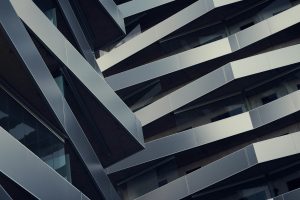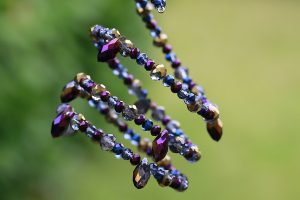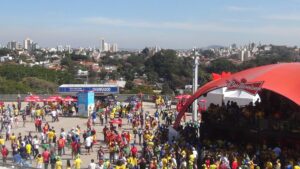Sustainability Goals: Introduction
Ah, non-renewable polymers. They’re like that ex who overstays their welcome at parties – everyone knows they need to go, but nobody knows how to show them the door. But, you see, like every breakup, it’s about time we find the right replacements and bid our dear old, environment-harming plastics a goodbye to move towards our sustainability goals.
Why Non-Renewable Polymers Are the Roadblocks?
Ah, remember those house parties where everything was going just fine until that uninvited guest showed up and changed the whole mood? Well, in the grand party of our planet, non-renewable polymers are that guest. They sneak in, overstay their welcome, and before you know it, they’ve crashed the whole party. Here’s a deep dive into the epic tale of these unsolicited guests.
First off, let’s give credit where credit is due. Non-renewable polymers, like that high school crush we all had, seemed promising when they first entered the scene. They promised durability, flexibility, and affordability. But like all things that seem too good to be true, there was a catch, and oh boy, what a catch it was!

These polymers, derived mainly from petrochemicals, have an awfully long lifespan. Imagine if confetti from a New Year’s Eve party from the ’90s was still hanging around in your living room. Yep, that’s non-renewable polymers for you. They simply don’t decompose easily. While this durability sounded great for product longevity, no one quite realized the mess it would leave behind. Landfills started overflowing, marine life began mistaking these polymers for food, and our landscapes got littered. In short, non-renewable polymers were like the guests who spilled wine on your white carpet and didn’t even bother cleaning it up. Rude!
Furthermore, the production of these polymers has been taxing on our resources. It’s akin to that party guest who not only crashes but eats all the food and drinks all the beverages, leaving nothing for others. The extraction and refining of the oil needed for these polymers have caused massive environmental degradation and contributed significantly to greenhouse gas emissions.
Lastly, our dependency on them is alarming. It’s like playing that one song on repeat during the entire party. While the tune might be catchy initially, by the 10th replay, you’re begging for a change. Non-renewable polymers are everywhere – from our grocery bags to the keyboard I’m typing on. This over-reliance not only impacts the environment but stifles innovation.
Funny Story Alert: Remember Uncle Bob’s ‘innovative’ idea of using plastic bags as rain boots? Sure, it made for a hilarious sight at the family picnic when it started pouring. But when those makeshift boots ended up as trash, lingering around like his terrible dad jokes, it wasn’t so funny. The solution? Biodegradable boots! They might not have given us as many laughs, but at least they weren’t still hanging around at next year’s picnic, like the remnants of Uncle Bob’s bad decisions.
The Legacy of Traditional Polymers: Did they overstay their welcome?
Remember when bell-bottom jeans were a thing? Much like them, non-renewable polymers had their time, but the era’s over. The impacts they’ve had on our environment is like leaving glitter everywhere – it’s shiny, but oh-so-messy.
Historical Overview of Non-renewable Polymers
Non-renewable polymers have an interesting history. They are typically derived from petroleum-based compounds, and their inception was seen as a groundbreaking moment in material science.
- The Birth: The first synthetic polymer to really gain traction was Bakelite, invented in the early 20th century. Celebrated for its electrical non-conductivity and heat-resistant properties, Bakelite marked the dawn of the age of plastics.
- Rise to Popularity: The versatility, durability, and cost-effectiveness of these polymers led to their rapid adoption in various industries. World War II further escalated their demand, offering lightweight, durable solutions for everything from equipment to packaging.
- The Golden Era: The post-war consumer boom saw an explosion in the use of non-renewable polymers. They became synonymous with modernity. From Tupperware parties to the invention of polyethylene (the most common plastic today), polymers were the heart of the industrial revolution.
- Over-dependence: As the 20th century progressed, society’s dependence on these materials grew exponentially. They were in our cars, our homes, our gadgets, and even our clothing. The convenience of disposable plastics, in particular, made them a staple in every household.
Environmental Impacts: A romance that went wrong
Picture this: A whirlwind romance that starts off with candlelit dinners and romantic getaways but ends up with burnt toast and unpaid bills. That’s the story of humanity’s relationship with non-renewable polymers.
- The Honeymoon Phase: Initially, non-renewable polymers were hailed as miracle materials. They promised durability, longevity, and resistance to the elements. We created a myriad of products, from toothbrushes to car parts, believing we’d stumbled upon a perfect match.
- The First Signs of Trouble: As early as the 1960s, the environmental community started raising alarms about the sheer volume of plastics and their non-biodegradable nature. These were being discarded as trash, ending up in landfills or worse, our oceans.
- Deepening Cracks: As more research emerged, it became evident that these polymers, when they broke down, resulted in microplastics – tiny particles that permeate our water sources, soil, and air. Marine life, mistaking them for food, began ingesting them, leading to catastrophic effects on ocean ecosystems.
- The Big Blowout: The realization hit hard when studies demonstrated the presence of these microplastics in human tissues, indicating that they had entered our food chain. What began as a convenience-driven relationship was now a toxic romance, with grave implications for human health.
- Seeking Counseling: The global community recognized the need for change. Movements against single-use plastics gained momentum. Countries started imposing bans and promoting recycling. While it seemed like too little, too late, the shift highlighted the awakening of collective consciousness.
The Case for Sustainable Alternatives
Getting to Know Renewable Polymers: The heroes we’ve been waiting for!
Renewable polymers are the environmental superheroes stepping into the spotlight. Sourced from natural, sustainable resources like plants and algae, they promise a future where products decompose harmoniously without littering our planet for centuries. As we face a growing plastic crisis, these polymers represent hope, innovation, and a clear path toward a greener, cleaner world. They’re not just a fleeting trend; they’re the sustainable answer to our long-standing synthetic polymer conundrum.

Benefits that’ll make your grandma proud
- Eco-friendly Footprint: Like leaving only footprints on a sandy beach and not plastic trash.
- Economic Advantages: Who said going green burns a hole in your pocket? These polymers make sure your dollars are well spent.
- Durability and versatility: It’s like having a Swiss Army knife. Handy, durable, and oh-so-versatile.
Making the Switch: Steps and Strategies
Eager to ditch that pesky ex and embrace the new flame? Here’s a cheat sheet!
Recognizing the Good, the Bad, and the Ugly Polymers
In the cinematic world of polymers, there’s a diverse cast of characters.
First, we have the good ones: the renewable polymers, hailed for their eco-friendliness and sustainable origins. They’re the knights in shining armor, stepping up to combat environmental woes.
Second, we have the bad: the non-renewables, which, despite their undeniable utility, have developed a reputation for their environmental indiscretions.
Lastly, the ugly polymers: those that are not just non-renewable but also come laden with toxins and harmful additives. They’re the villains lurking in the shadows, causing unseen harm. As consumers, understanding this spectrum helps us make informed choices, supporting the good while shunning the bad and the downright ugly.
Implementation Tactics: Because, why not?
Switching to renewable polymers isn’t a mere fad; it’s a necessity for a sustainable future. But how do we make the transition smoother? Dive into the tactics!
Research and Development: It all begins here! Think of R&D as the brainstorming phase of a group project. Companies need to invest time, money, and brainpower into understanding renewable polymers better. From pinpointing suitable materials to tweaking the final product’s quality, R&D is the lab where all the magic happens. This phase is about trailblazing innovations and ensuring that renewable polymers meet, if not exceed, their non-renewable counterparts in performance.
Adopting Sustainable Manufacturing Practices: Once we’ve cracked the ‘what’ (thanks to R&D), it’s time to focus on the ‘how’. Transitioning to renewable polymers isn’t just about the material; it’s also about the processes. Companies must adopt eco-friendly manufacturing methods, reducing waste, conserving energy, and minimizing the carbon footprint. It’s not just about making green products but ensuring the entire production cycle screams sustainability!
Engaging with Forward-Thinking Suppliers: In the grand orchestra of sustainable production, suppliers play a pivotal role, often setting the tone for the entire performance. Engaging with forward-thinking suppliers means partnering with those who not only provide materials but also share a vision for a sustainable future. These suppliers prioritize eco-friendly sources, uphold ethical harvesting or production methods, and maintain transparent operations. By aligning with them, companies ensure that the very foundation of their products— the raw materials— is rooted in sustainability. It’s akin to choosing friends who share your values; these suppliers champion green initiatives, drive innovation in sustainable sourcing, and ultimately help businesses craft a narrative of genuine commitment to the environment. In a world where every choice counts, picking the right partners can make all the difference.
Real-Life Success Stories: Because Who Doesn’t Love A Good Tale?
Gather ’round, dear reader, because it’s Storytime! And not the kind where the dragon is vanquished or the princess finds her prince, but real-world tales of innovation, determination, and sustainable breakthroughs. Here’s a look at some companies and individuals who have managed to flip the script, swapping out non-renewable polymers for greener alternatives and emerging victorious.
Companies that aced the transition
1. Adidas x Parley for the Oceans:
- The Challenge: Tons of plastic debris, floating in the oceans, threatening marine life, and impacting coastal communities.
- The Solution: Partnering up with Parley for the Oceans, Adidas launched shoes made from upcycled marine plastic waste. Yes, those trendy sneakers you’ve been eyeing might just be made of trash from the ocean!
- The Outcome: Not only did these kicks become instant hits among consumers, but the initiative also led to the removal of significant amounts of waste from our seas. Talk about walking the sustainable walk!
2. Echogen Power Systems:
- The Challenge: The vast amounts of heat wasted in industrial processes.
- The Solution: Echogen developed a method to transform waste heat into electricity using a unique polymer system.
- The Outcome: The company has not only reduced energy waste but has also presented a way to turn wasted heat into an energy asset, showcasing the untapped potential of innovative polymer use.
3. LEGO’s Plant-Based Blocks:
- The Challenge: Decades of producing plastic toy bricks that, while providing hours of fun, were also environmentally concerning.
- The Solution: LEGO stepped up, announcing that they would be launching a range made from sugarcane-based plastic. These bricks aren’t just plant-based but also perfectly compatible with the conventional LEGO pieces.
- The Outcome: Children (and let’s admit, adults too) can now build a greener future, one brick at a time, fostering an eco-conscious mindset in younger generations.
Positive impacts they’ve witnessed
1. Adidas x Parley for the Oceans:
- Brand Image: Associating with a green initiative enhanced Adidas’s reputation, positioning it as a responsible and innovative brand.
- Sales Boost: The unique selling point of shoes made from upcycled marine plastic waste resonated with consumers, leading to increased sales and demand.
- Engagement: The collaboration led to enhanced consumer engagement, with increased social media traction and positive PR.
2. Echogen Power Systems:
- Innovation Recognition: Echogen’s efforts were recognized as groundbreaking, establishing them as pioneers in sustainable industrial practices.
- Cost Savings: By converting waste heat to electricity, companies adopting Echogen’s technology witnessed significant savings in energy bills.
- Partnerships: Their innovation opened doors to collaborations with industries looking for green solutions, expanding their clientele.
3. LEGO’s Plant-Based Blocks:
- Parental Approval: For many parents, offering sustainable toys meant they were making a responsible choice, resulting in increased loyalty to the LEGO brand.
- Market Differentiation: LEGO positioned itself uniquely in the market with its sustainable offerings, giving it an edge over competitors.
- Educational Value: Beyond just play, LEGO now had an educational story to tell, teaching kids about sustainability through their favorite toys.
Challenges & How to Overcome Them
Because every rose has its thorn:
Just like a beautiful rose comes with sharp thorns, the journey towards sustainable alternatives isn’t without its pain points. Initial costs, skepticism, and adapting to new systems might prick us along the way. But remember, it’s the end result – a blooming, sustainable future – that makes every little scratch worth enduring.
Innovations & Solutions: Our unsung heroes:
In the narrative of replacing non-renewable polymers, innovations and solutions are the unsung heroes, silently revolutionizing our approach. From bio-based polymers to recycling breakthroughs, these innovations are the catalysts driving us towards a greener tomorrow. While they might not always grab headlines, their impact is undeniable, providing hope and direction in our sustainability journey.
Sustainability Goals: Where do we go from here?
In a world awash with plastic, taking the step toward sustainable alternatives is more than just a trend. It’s a necessity. It’s like switching from binge-watching trashy reality shows to something more educational. Both have their appeal, but one clearly has long-term benefits (and fewer regrets).
The sustainable future we all dream of
When we talk about a sustainable future, we envision a world where harmony between human development and the environment isn’t just an aspiration, but a lived reality. It’s a world where the air is free of pollutants, oceans brim with life unburdened by plastic waste, and forests stand tall, untouched by deforestation. In this dreamlike scenario, cities are designed with green spaces and clean energy sources, industries operate without depleting our natural resources, and communities thrive while respecting the delicate ecological balance.
FAQs
Why are non-renewable polymers such a menace? Imagine if every piece of bubble wrap you ever popped still existed. Scary, right? In a nutshell, non-renewable polymers are a menace not just because of their physical presence but due to the cascading effects they trigger in ecosystems, economies, and overall planetary health. We’ve essentially been handed a ticking time bomb, and the alarm is getting louder with each passing day.
How can I help in my own small way? Start by reducing single-use plastics. And maybe don’t try Uncle Bob’s plastic bag boot trick.
Aren’t renewable polymers pricier? Think of them as an investment. Good for the pocket in the long run and great for the conscience.
How long do traditional polymers stick around? Longer than your embarrassing childhood photos on the internet.
What’s the first step businesses can take towards this switch? Educate, adapt, and innovate. And maybe also a “no more polymers” company chant to get everyone pumped!




